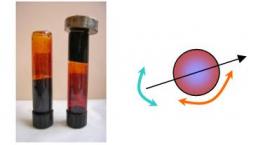
Welcome to the SPEC website
We are the Condensed Matter Physics laboratory of IRAMIS (Saclay Institute for Radiation and Matter), a part of the French National Atomic Energy Commission (CEA) in Saclay, France.
SPEC is "Unité Mixte de Recherche" with the CNRS : UMR 3680.
At SPEC, we strive to be at the forefront of fundamental Condensed Matter Physics Research. Our research interests encompass a wide variety of subject matters ranging from nano- to macro-scopic scales and from the most fundamental aspects of science to applications, patents and technology transfer. SPEC is involved in many collaborations, within the CEA and at the national and international levels.
Director: Patrice Roche
Deputy Directors: Céline Fiorini and Myriam Pannetier-Lecoeur
















